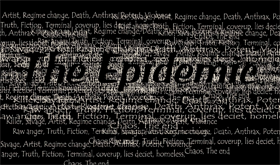In late August on these pages, we offered some views on provider adoption of EMR software. The post generated some useful discussion, so it makes sense to offer additional views on the evolving vendor landscape relative to Health Information Management (HIM).
In late August on these pages, we offered some views on provider adoption of EMR software. The post generated some useful discussion, so it makes sense to offer additional views on the evolving vendor landscape relative to Health Information Management (HIM).
Several companies with roots in the HIM sector have emerged in recent years to address the gaps and limitations associated with most EHR deployments. Although some of these companies had a long history in the sector and are sometimes incorrectly ‘boxed’ as providing commoditized services in the areas of transcription and release of information services, several have developed exceptional new technology in the fields of clinical language comprehension and analytics that is highly relevant for the business objectives of the most progressive health systems.
The unique ability of these firms to impact the evolution of the clinical documentation and analytics landscape stems from:
- The much broader scope of data they can access and analyze due to their ability to source and organize both structured and unstructured clinical data;
- Their position at the middle of the Revenue Cycle Management (RCM) value chain, where clinical data capture and analysis intersect with the complex regulatory and financial concepts designed to align reimbursement with the appropriateness of care being delivered; and
- Their potential to rationalize siloed functions in health systems related to Clinical Documentation Improvement (CDI) programs, case management, care coordination, utilization review, and compliance at a time when providers are responding to new reimbursement and risk-shift models that require them to operate more like payers.
The opportunity for growth and transformation within the HIM sector correlates to the size of the challenge facing its leading competitors. As shown below, with the bulk of clinical information trapped in unstructured text, and with a historical dearth of tools to aggregate, tag and then standardize this data, the repositioning of the sector is still in its early phases.
Although the HIM evolution has just started in many respects, a few prominent companies have been active consolidators resulting in a product and services progression. The initial focus for these technologies has largely been focused on coding and the impending move to ICD-10, but they also have the potential to impact far more than the traditional coding/revenue cycle management workflows and open the door to a more pervasive presence across the provider’s case management, utilization review, and care coordination functions. As we survey the current landscape, we expect the leading vendors will continue to push their products and services heavily into the following categories:
- Natural Language Processing (NLP): Advanced NLP technology capable of comprehending vast amounts of unstructured data locked in dictated and transcribed notes. NLP is critical to gaining a comprehensive view of key clinical and financial elements.
- Clinical Documentation Improvement (CDI): Incorporation of the latest clinical documentation best practices and coding guidelines within the end-users workflow to ensure optimal documentation granularity and compliance concurrent to the patient visit. CDI allows for real-time alerting of documentation deficiencies and tracking of various quality metrics (e.g., Core Measures, SOI, ROM, etc.) for compliance and bench-marking purposes.
- Clinical Data Tagging and Standardization: The ability to search, tag, and map the entirety of structured and unstructured data sources in a common organizational framework, or coded language such as SNOMED. The inability to map data to common standards makes it impossible to expose data to rules engines and analytics capabilities that foster clinical and business understanding.
- Computer Assisted Coding (CAC): Next generation CAC technology capable of supporting a wide range of clinical chart types and care delivery settings, particularly within the inpatient arena. CAC technologies that can automate more complex coding environments are well-equipped to drive greater automation and information dissemination across the provider’s entire organization.
Taking a step back from the vendor landscape, the industry remains in the midst of rapid and continual change, and hospital and physician clinical documentation is only one piece of a larger puzzle. This area of healthcare continues to be an area of focus for our team at TripleTree, and we’ll continue to follow and report on the cutting edge of these changes.
Let us know what you think.








